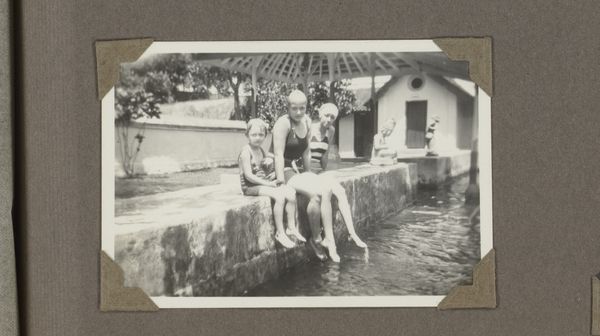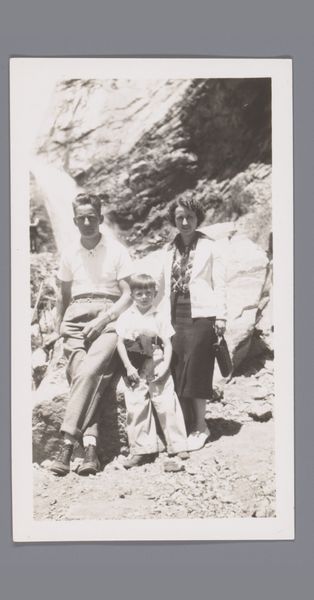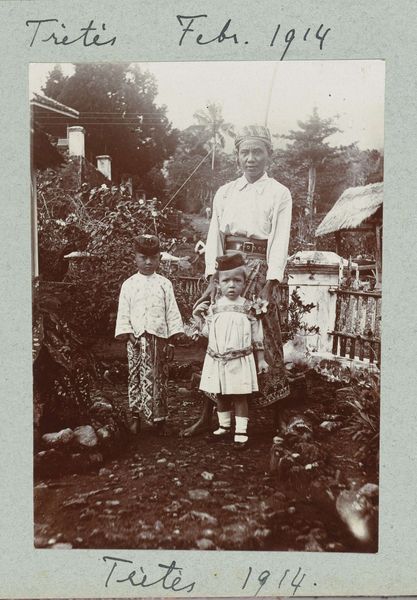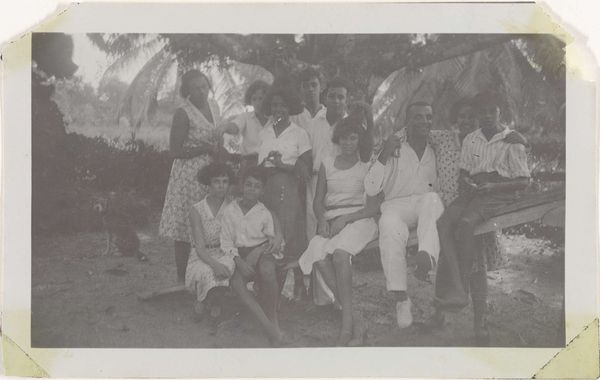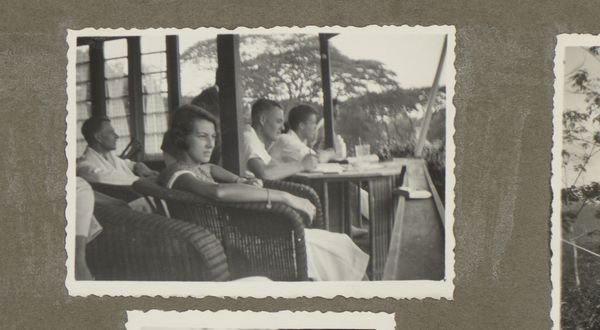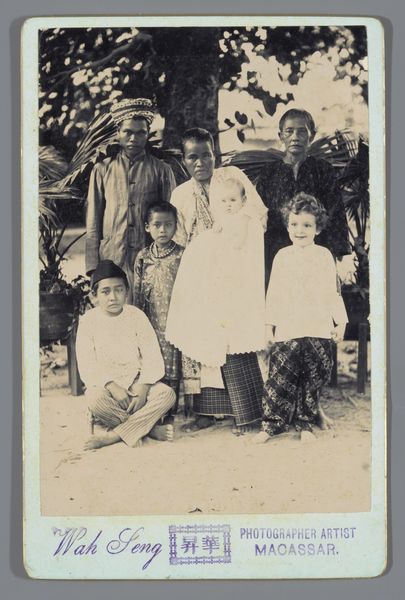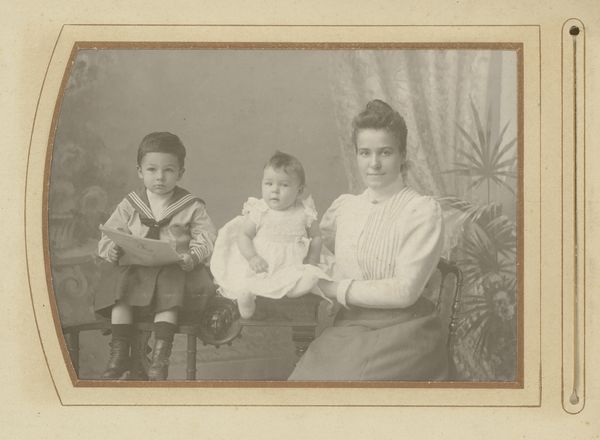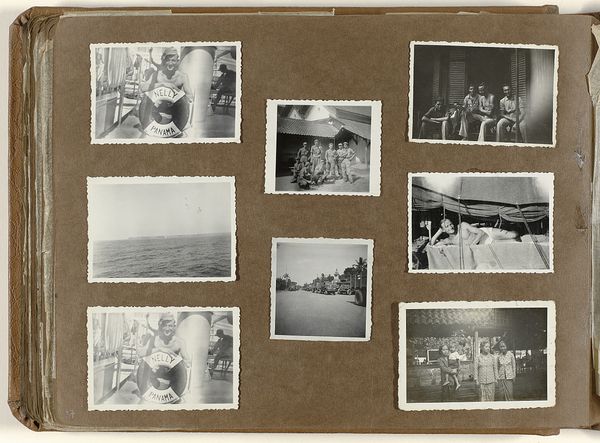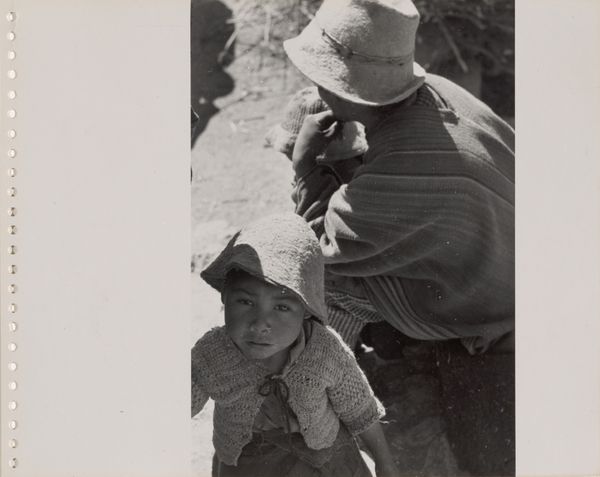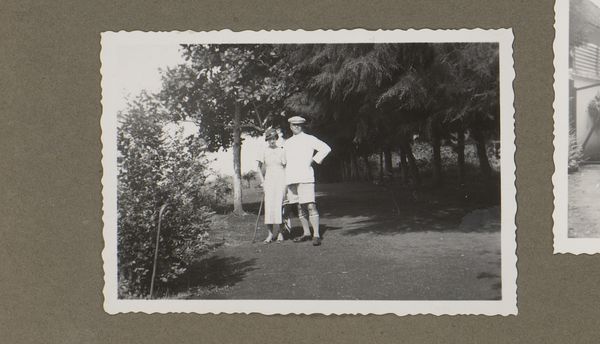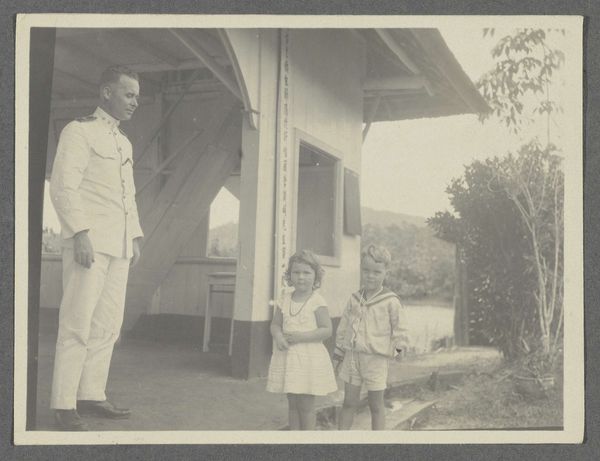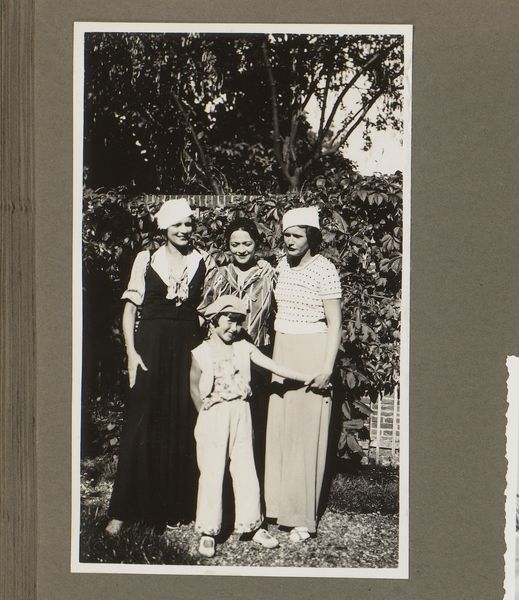
Dimensions: height 5 cm, width 5 cm
Copyright: Rijks Museum: Open Domain
Curator: This image is by David Ketel and is titled “Children on the Beach.” He created this photograph in 1952. You can currently find it here at the Rijksmuseum. Editor: There's such a beautiful, wistful atmosphere to this photograph. The composition immediately strikes me. Four children grouped on and around the rocks, with this wide expanse of muted water behind them and the soft colors create a feeling of nostalgia. Curator: Ketel was deeply interested in portraying everyday life in postwar Netherlands, specifically how these communal activities are tied to national identity formation. How do we begin to consider what beach culture symbolizes? This scene then seems to offer a quiet counterpoint to images celebrating prosperity. Editor: The quietude is what gets to me, though, and these groupings can also explore other possibilities within intersectional discourse. There’s almost an androgyny to them that I'd want to unpack. Gender performance and childhood as performance interests me here. Curator: Absolutely. The socio-economic realities in 1950s Netherlands profoundly affected how children experienced the world. Institutions still recovering from wartime damage, like schools and orphanages, would have played a massive role, shaping the way Dutch youth perceived the world beyond that beach. It is also easy to see this a work firmly within the realism movement, especially looking at the subjects. Editor: The stark rocks feel like such a contrast to the ephemeral, airy sky and the water’s horizon behind them, but looking again, I feel a sense of hope. The children look weary but relaxed and even joyful. There is strength here. It shows how important even a mundane shot, in context of historical art making, can be refigured and re-understood across timelines and eras. Curator: I agree; it’s not about simplifying art but making it more enriching to those who may experience it later. The photograph also really captures the evolving role that Dutch documentary style played. Editor: Seeing how the landscape informs the scene offers important information regarding national and global identity that still reverberates through communities. It serves as a mirror reflecting ourselves and the world around us.
Comments
No comments
Be the first to comment and join the conversation on the ultimate creative platform.
